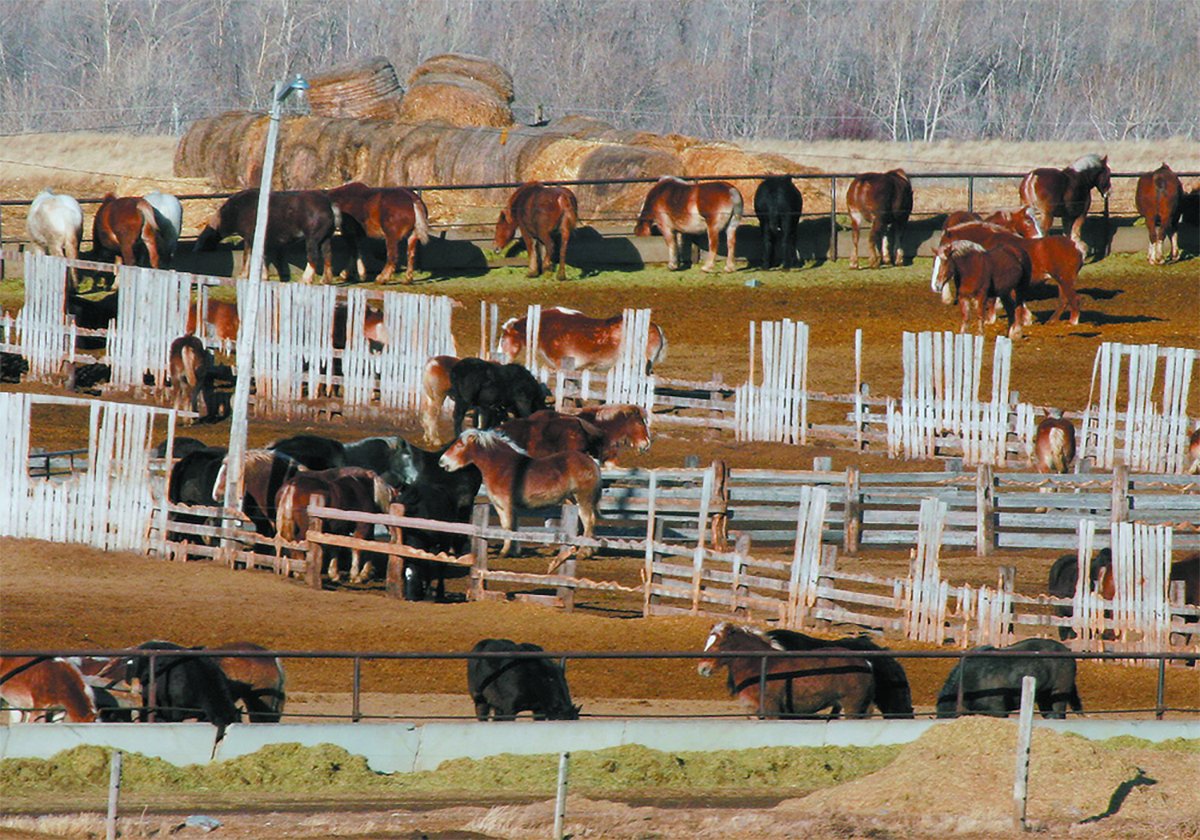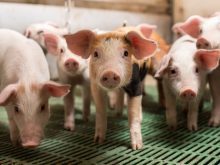SPRUCE VIEW, Alta. – When Pam Williams gazes out her kitchen window in central Alberta, she is convinced she has her own little piece of paradise.
She and her husband Bob own Kick’N’ Ass Acres near Spruce View, where they raise a menagerie of birds, donkeys and Jacob sheep.
“They’re woman-friendly sheep,” said Pam.
“We tried many species and finally settled on the sheep and donkeys,” she said.
Former city dwellers who moved to the farm 10 years ago, they wanted quiet animals that are easy to manage since Bob works off the farm and Pam is responsible for most of the chores.
Read Also

Canada’s slaughter horse industry lacks transparency
The lack of clear reporting and public access to data keeps the industry largely hidden, leaving questions about humane treatment and traceability unanswered.
Jacob sheep are registered with the Canadian rare breeds conservancy. The history of these multi-horned sheep stretches back to Biblical times where Jacob, the father of the 12 Hebrew patriarchs, kept spotted sheep that he had received as payment for working on his uncle’s farm.
The breed first came to the United States as display animals in parks and zoos. Additional sheep arrived from England about 40 years ago. The Williams bought their first 10 sheep from a breeder in British Columbia.
There are fewer than 100 registered Jacob sheep in Canada. The Williams have about 40 registered and unregistered sheep.
The animals grow a soft, white wool coat that is dappled with black. Lambs are born with small buds for horns. With their black and white colouring, their faces look like panda bears.
Williams is a spinner and finds the wool easy to work. She dyes some swatches and leaves other batches in their natural shade. The wool can be sorted by colour or spun together to create a variegated yarn.
The fibre length, or staples, are seven to 20 centimetres long and work well for knitted items as well as felting. Rich in lanolin, the wool is fine and less scratchy than some modern breeds.
The unique colouration is complemented by a spectacular set of horns on rams and ewes. These sheep carry a special gene that allows them to grow anywhere from two to six horns. One set curves around their faces like wild Bighorn sheep, while the other horns extend upward. Rams can grow horns reaching 75 cm or more.
Occasionally horns are broken so Williams collects them to make a unique oval shaped button for her knitted garments. When the horns grow to their full length, the animals are fed on the ground rather than left to struggle around a sheep feeder.
Surplus ram lambs are killed at Canada West Foods in Innisfail, Alta., and sold as freezer lamb to Williams’s local customers.
Besides the sheep, the Williams raise guard donkeys for predator control. These are sold to cattle and sheep producers who want an effective guard against marauding coyotes.
Bob loves birds and raises guinea fowl and peacocks. The peahens lay numerous eggs in their pens that are collected and placed in an incubator. Peacocks are easy to sell because many people enjoy them as a display bird on their farms.
Bob raises a variety of brightly coloured birds as well as whites. A peacock sheds more than 200 tail feathers each year that are collected and sold to crafters and fly tie fishers.
The guinea fowl rule the farm as they race in a tight little flock from one end of the yard to the other. These round, grey birds are sold to people looking for effective bug control. The birds particularly like grass-hoppers and this past summer, customers were buying them by the dozen to turn loose in their gardens and yards.
In addition to farm work, Williams is a registered massage therapist. Mornings are devoted to her farmer clients who come in droves during the spring and fall with sore necks, shoulders and backs. Early on, she made sure everyone understood her business was not one that offered soft lights and warm oil.
“After they’ve been with me, they feel like they have been bruised,” she said. She practises therapeutic massage, working knots out of sore and overworked muscles and is convinced more farmers should consider using services like hers rather than injure themselves further.
Working at home on the farm is part of a growing trend, said Williams. Many of her neighbours run businesses out of their homes to earn extra cash in a region that is mostly cow-calf and grain operations.
“Home-based businesses are becoming more common on the farm,” she said.

















